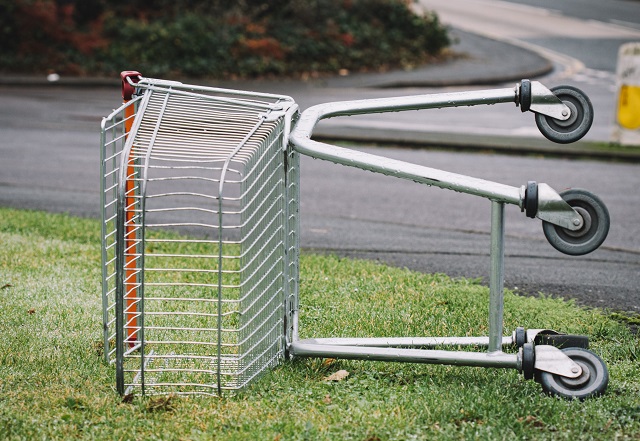When you first launch an ecommerce business, most of your time and resources will go into setting up the site and facilitating orders. Key performance indicators (KPIs) probably aren’t on your radar yet. However, as you get more comfortable with running an ecommerce store, you’ll eventually want to start focusing on optimization and improvements — which is where ecommerce KPIs come into play.
Unlike brick-and-mortar stores, online businesses have access to a wealth of tools, data, and insights that can help business owners glean trends and measure performance. These ecommerce KPIs can alert you to certain problems related to your website, products, and business model.
Whether you’re using Google Analytics, Hotjar, Coremetrics, or another analytics tool, the important part is that you’re implementing systems to help you assess and improve your ecommerce business.
When considering what ecommerce KPIs to measure, don’t get distracted by vanity metrics that only serve to make your website look good. Focus on ecommerce KPIs that can drive your business forward and help you grow successfully.
Let’s take a look.
Average order value
The average order value (AOV) provides information on the typical amount of money that customers spend per visit. The AOV for a coffee shop like Starbucks likely hovers around $7. The AOV for a jewelry store might be $400 or more depending on the market.
AOV is an important ecommerce KPI to track because it can be manipulated by your marketing efforts. For example, a survey by the National Retail Federation found that 75% of consumers expect shipping to be free on orders below $50.
This means that shoppers might bounce if they have to pay for shipping. By setting a free shipping threshold (for $35, $50, or even $100 depending on your average order), you can encourage customers to spend more.
For example, if your average order is only $85, you can set a free shipping threshold of $100, encouraging most customers to spend the extra $15 (increasing their perceived value) in order to save money with the free shipping.
The coupons you develop, customers you attract, and products you promote will all impact your AOV, which reflects the success of your business.
Related: 10 tactics to turn impulse shopping into stone-cold sales
Cart abandonment rate

The cart abandonment rate is an ecommerce KPI that tracks the percent of people who add items to their carts without completing the purchase. This number varies by website and industry, but the universal average for 2020 is 69.57%.
This means after all of your efforts to bring people to your website and promote your products, 70% of people who add items aren’t going to buy them.
Generally, most ecommerce experts suggest keeping the checkout process as streamlined as possible — including but not limited to allowing guest checkouts, automatically using the same address for billing and shipping, and adding one-click pay options like PayPal or Amazon Pay.
Once you know your cart abandonment rate, you can start making decisions to bring this number down. By improving the checkout process, providing better product information, and sending out abandoned cart notifications, you can convince customers to complete their purchases.
Small changes in this ecommerce KPI can add up and quickly grow your sales.
Conversion rate
Along with tracking abandonment rates, look at your conversion rate (CR). This ecommerce KPI considers the total number of people who purchase versus the total number of people who have the opportunity to purchase (i.e. web traffic).
This percentage can indicate a few takeaways such as whether you’re attracting the right audience, whether you have technical issues with your site, and if you need to optimize your pages better.
From a high level, you can look at CR out of everyone who lands on your site or drill down to specific product pages. You can also look at CR by the department, by AOV, and by position in the cart.
For example, if you find that customers who look at lower-priced products are less likely to convert, you can try to change their behavior by improving the product descriptions or lowering the shipping threshold.
CR is another ecommerce KPI where minor adjustments can significantly grow your profits.
Cost per acquisition

A successful ecommerce business will balance sales with their operational costs. The price of the materials, manufacturing, and marketing efforts all take away from the profits that come from your site.
At the very least, your team can track the cost per acquisition (CPA) ecommerce KPI to understand how much it costs to bring people to your business and get them to convert.
At the highest level, take your total marketing cost for the month and divide it by the number of sales over the same period. If your site spends $2,000 in marketing and attracts 100 customers, then your CPA is $20.
CPA is an ecommerce KPI that is often broken down by marketing channel. If you are trying to see whether Instagram or Twitter is a better marketing investment, then you would look at the CPA.
That being said, there are multiple factors that go into profitability. In this case, Twitter may have a higher CPA because it attracts new customers or shoppers who have a higher AOV.
With your CPA, you can see how profitable your marketing efforts are. If your CPA is $20 and your AOV is $40, then you are likely making money. However, if you have a $38 CPA and a $40 AOV, then your total profits will be much smaller.
Related: 11 steps to create a marketing plan for your business
Customer lifetime value
Another ecommerce KPI to keep an eye on as you grow your ecommerce business is customer lifetime value (CLV). The easiest way to track this metric is to take your AOV and multiply it by the number of customer visits per year and their average time spent with your company.
Using Starbucks as an example again, a $7 AOV from a customer who visits three times per week is $21. Over the course of a year, that customer is worth $1,092 to the coffee shop. Over the course of five years, they are worth $5,460.
Every company has its own CLV.
Bookstores and clothing retailers might get visitors monthly while car dealerships only see some customers once a decade. CLV will help when tracking your CPA.
At first, it might not seem profitable for that coffee shop to spend $30 to get a $7 customer. However, with enough loyalty, that $30 can pay off in droves when you consider the future value of that customer.
Develop a dashboard to track your KPIs
Once you have an idea for which ecommerce KPIs are most important to monitor the health of your site, develop a process to check them regularly. Some companies accomplish this through Google Analytics reports or develop their own reporting tools that provide windows into the information they need.
For example, a costume retailer wouldn’t need to compare sales in October to those in November if Halloween is their biggest sales holiday. However, they would want to see how the AOV and CPA ecommerce KPIs changed year-over-year.
Test different views so you can get the most value from your data. Remember; tracking and measuring ecommerce KPIs is just the first step — now you need to then start setting goals.
The post Which ecommerce KPIs should you focus on? appeared first on GoDaddy Blog.




